Storyteller and psychologist Kim Bateman begins her series Death Dialogues with this essay.
I Pledge Allegiance to the Republic of Not-Dying
Hap has been wrestling with lung cancer for many years. And by wrestling, I mean more of a dance, where one is acting and reacting in response to the other in some sort of spontaneous choreography. At each juncture when a new treatment is suggested, he says, “Why put money in the meter when you are not going to park there?” or “Would you water a dead plant?” He gives a wry smile and laughs– at himself, at us for trying to buy more time, at the medical establishment. He will do some things but not others. His dying is like a cup that he shares—passing humor, perspective, and compassion for himself, for his loved ones around. He is not afraid. He is rare, very rare.
Two years ago, my 52 year-old friend, Elisabeth was diagnosed with Stage IV uterine cancer. We spent days with “Surviving Cancer” books spread all over the living room floor and enthusiastically shared solutions with one another. “A macrobiotic diet,” I call out. “No, a raw diet says this one,” she responds. “Oh here’s another one that says you should never use lipstick,” I offer. “It’s the plastics leeching into the food in the microwave,” she says. We pause and look at each other, “Fucking Jenny Craig!” we both say at the same time. She gasps as she reads that candles are carcinogenic. We look around the room at the dozens of candles and blow them all out. In the darkness, I whisper,“This one says she was cured with visualization.” I share my idea of an asteroids game where we are shooting the cancer cells. Elisabeth, in her gentle way, says she sees the cancer as manifestations of her own negative thoughts and that they are part of her and she needs to ask what they want of her. I am impressed with her grace but also think it is ridiculous. I don’t want her blaming herself and remind her that our beloved dog Cody died of cancer and I am pretty sure he didn’t have many negative thoughts. Babies also die of cancer; perfectly innocent babies who don’t struggle with whether they are creative enough, or spiritual enough, or crippled with self-loathing and doubt. I turn into an arm chair biologist and try to explain the evolutionary inevitability of mutations, etc. It seems hollow. I ask her if she thinks she is dying. She says emphatically, “NO!” I can’t let go of the idea that a foreign army has invaded her body and we need to mobilize the full force of our battalion. I want to kill these S.O.B’s. There is no cup being passed around, only my desire for a steely sharp blade or a bazooka. I let my anger remind me of who and what it is I belong to. And I feel self-righteous for a moment but it is short-lived. I am really terrified, vulnerable, and impotent. We all are.
Every one of these cure cancer books starts with some variation of the same message—“I was given X amount of days/weeks/months to live and here I am Y years later, cancer free!” I am happy for these people but it occurs to me that the dead don’t write much. They are story-less because as fearful people, we only want to hear about those who have supposedly “won.” It is all we can tolerate when we are desperate. I mention the Surviving Cancer books to Hap, who says, “Well, you can sit around and try to figure out how the horse got out of the barn or you can go and catch the god damned horse.” We want to catch the god damned horse. We do not want to do nothing. But we find that our escaped horse is well into the next county and picking up speed. Strategies are outlined, reinforcements brought in, and the chase begins with Elisabeth and her loved ones riding alongside the oncologists shouting “Let’s DO this!” A battalion of chemicals is commanded. The battle cry has been sounded.
And from the first moment onward, it is a brutal, horrific fight in which we are all victims, witnesses, and participants– surgery after surgery as they cut pieces of her body out, multiple rounds of life sapping chemo, drugs, anguish, pain and more pain. We want to win, which means we want more time, but no one stops to ask what kind of time–time for more interventions? More drugs? More side effects from more drugs? More drugs to manage the side effects of the side effects drugs? Quite simply, more suffering. She tries to remain who she is—a deeply intellectual and spiritual person–but instead finds herself slipping into an endless litany of physical symptoms to be managed. She and we do not sit well with her dying; we all become complicit in pledging our allegiance to the republic of her not-dying. We are going to catch that horse. And we gallop on, our flags of faith and love and WE BELIEVE flowing freely. To not do so would be treason.
Living with the inevitability of sometime-in-the-near-future dying is difficult for so many reasons. Day by day she loses her capacities—to do her beloved work, to walk her dogs, to keep up on correspondences. She drops 60 pounds and I hear her say through the tears, “See, cancer is the only diet that really works.” We smile sickly, briefly. She can barely stand but she puts on her wedding gown and poses for my camera, reliving one of the best days of her life.
In the end, she couldn’t control her bladder or her bowels and was bleeding profusely from a tumor that had perforated the vaginal wall– my private and modest friend, with bodily fluids leaking out of every southbound orifice. But I think the hardest part was living with the immediate inevitability of dying in a culture that only values not-dying. Dying became the ultimate failure, which of course, it is not. It became a reflection of the weakness of her character, which of course, it is not. It became the worst possible ending to an unfinished story, which honestly, I am still struggling with. My wiser self would like to say, of course, it is not. But I miss her, and the loss of potential is still hard to hold.
One day before she left us I asked her, “Do you think you are dying?” She said, “No.” She died with her eyebrows raised in quizzical arches, her mouth in a perfectly round “O” of surprise, and this expression was frozen permanently into her features. It is the last thing I saw when the mortuary men zipped the white bag. Though she certainly thought about death a lot, she didn’t actually believe she would die.
Instead of dying well, and coming together in what is the most fundamental rite of passage—a chance to be human beings to one another—we spend most of the time refusing to die; praying for more time; remaining hopeful and optimistic; enduring medical intervention after brutal medical intervention, managing physical complication after complication; never speaking of the death, though it is what we are all thinking, for fear that we will invite it into our homes. Being scared. Really scared.
I find it striking that collectively, we are so bad at one of the most profound and inevitable of human experiences—dying. Even after receiving a terminal diagnosis, we instinctually finger our weapons instead of passing Hap’s cup around. We all become unconscious actors in a script that has been written by our death-phobic and grief challenged culture–a place where deep, complex and difficult feelings are denied, self-medicated, distracted; where being aggressive rather than passive is heroic; where the unknown is something to be feared; where we believe that technology will fix it; where life is a victory and death a defeat. Our society has declared a war on death. It is seen as the enemy and it is a moral and technological imperative that we fight it. Dying people may feel that to not subject themselves to the indignities and suffering of protracted medical procedures means they are disloyal to their families, that they don’t love enough, that they are weak. Doctors may be dismissed for speaking honestly. Loved ones think that to mention dying is “giving up.” And the first commandment in the covenant of not-dying is THOU SHALT NOT GIVE UP. If you, your loved ones, or your doctors “give up” it is desertion from the good cause of not-dying. Obituaries use the language of this war over and over—“after a courageous battle with…..” and “she fought mightily until the end.” The implicit meaning is that we didn’t choose the right interventions, develop sophisticated enough technologies, or believe enough. It is fundamentally flawed. This paradigm makes us all losers in the end. We can’t win.
In dying, we are given the opportunity to be the best possible person, friend, spouse, parent, sister, brother, daughter, son, lover. It is not the end of our role, instead it is the most important in a series of loving gestures that we have the chance to offer. Dying is a physical process, but it is a psychological and spiritual event as well. When given a terminal diagnosis, we need to consider putting down our weapons and drinking deeply from Hap’s cup of humor and shared compassion–for ourselves, for our loved ones, and for all those missed and silenced dead who have stories. Please don’t say my friend “didn’t make it,” or “lost the battle,” or “succumbed to cancer.” Maybe Elisabeth “did make it,” and is in some green pasture somewhere, offering a handful of grain to that horse we have been so eager to capture. Knowing my friend, that is exactly what she would be doing.
##
Kim Bateman, Ph.D. is the author of Crossing the Owl’s Bridge: A Guide For Grieving People Who Still Love (Chiron, 2016) and “Symbolmaking and Bereavement: The Temples at Burning Man” in And Death Shall Have Dominion (Interdisciplinary, 2015). She presented a TEDx talk called Singing Over Bones (https://www.youtube.com/watch?v=P3hibkFcld0) and serves as the Executive Dean of the Tahoe-Truckee Campus of Sierra College. Visit her website:http://www.kim-bateman.com for information on speaking/workshops, blog, and client services.
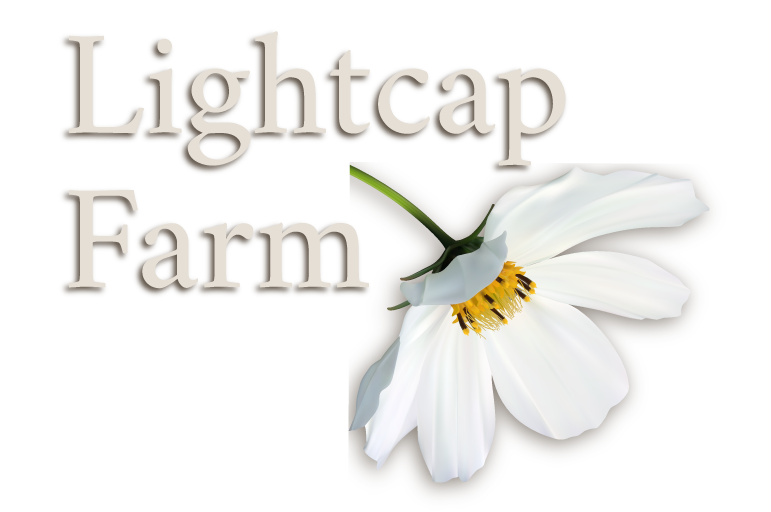

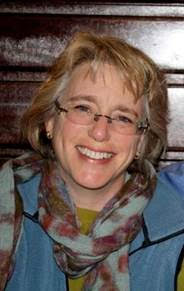
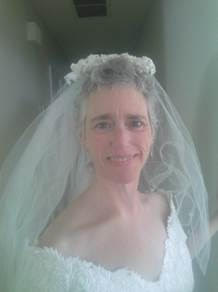
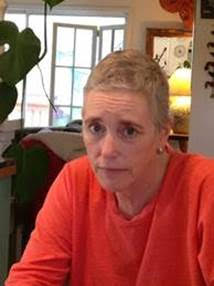
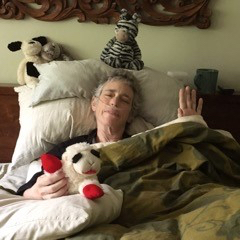
This is a wonderful blog. It gives those of us who live in the shadows of death an opportunity to speak our mind without fear of ridicule. In the report “Dying in America”, published last year, it addressed the populist backlash to the provision in the Affordable Care Act which allowed clinicians to be reimbersed for having discussions with patients about how they want to spend their remaining days. The backlash accused the proponents of the Act of setting up “death panels” that would make life and death choices for patients. This caused such a furor it was removed from the ACA and reintroduced only recently. It is not only the fear of death that pervades our culture, but also the fear that our innate right to fight heroically against it be taken away. Perhaps similar to the right to bear arms. The hero is entrenched in our consciousness, for better and for worse. The hero’s shadow however is what Kim is addressing in her blog. It the shadow personified in Mary Shelley’s Frankenstein written long before the discovery of all our life saving technologies. Dr. Frankenstein could not accept or learn from his mother’s death. Instead, he immersed himself in the prevailing sciences obsessively looking for the “elixir of life”. In his heroic attitude toward death he created a creature he could not face, could not accept, could not love. Though he had all the herculean qualities his creator intended, his countenance bore the terrifying image of death. For this he was rejected not only by his creator but by all of mankind. There was not one kind face, not one that could reflect the love that was emerging in his heart after creation. That love died and in the creature’s rage he killed all who Dr. Frankenstein cared about. He made for his creator the same bed he must lie in. The dying person must not only face death, but must also face the rejection by the community and culture that “reared” him or her. This is the humiliation that is feared when one is asked to abandon the heroic attitude for death’s mysterious lessons. The aloneness and alienation compelled by the collective is insidious. It lies behind the smiles and well wishes. At its root, every look into the countenance of a dying person has in it the face of the “wretch” because the “non-dying” cannot see beyond it. It’s the hospice community, in its encapsulated subculture, that embraces death and its mysteries. It opens its doors to the creature while the townspeople hunt it down with torches. But hospice is shielded from the community so the community not be contaminated by what it knows about death. Every election of hospice for a dying person feels countercultural. Those are the times we are in. The secrets of the dead are kept within a small circle. Kim is within that circle and will continue to tell their stories. Will we listen to what they have to teach us?
Daniel-
Thank you for your thought provoking comments! The comparison of these issues with the right to bear arms is a really insightful one. I can see a new piece developing out of that idea….and love the image of the hero’s shadow–particularly as expressed in Frankenstein. You also point out, so accurately, how our loved ones (or ourselves) are not only having to integrate the thought of dying, but also dealing with the humiliating projections of our loved ones (the smiles and well wishes, entreaties to BE CHEERFUL and look on the bright side). We are a culture who has been fed on the non-nutritious soul food of Oprah affirmations. And I think we are starving for meaning. Thanks for reading and responding.
Beautiful. I hope I remember this when the time comes, as it will.
Thank you for this profound and moving post. And for continuing to address issues that are too often ignored in our society and in the media, such as illness (mental and physical) and dying. Our mortality is just about the central fact of our existence on earth: as humans, as living beings, all of us will die. It’s one of the most, if not the most, terrifying thing any of us will face. It’s interesting that a previous commenter above mentions Frankenstein; the horror genre (and gothic fiction, among others) has to varying success addressed the issue of death, of what happens afterwards, and our ideas of “the great beyond” (if there is one).
I lost two beloved friends to cancer: the first one when I was a late teen. She was one of my closest friends, who’d endured a brutal round of chemo and radiation to treat her Hodgkin’s disease; and when it returned decided she would only try alternative therapies. These seemed to be effective for a brief time, but ultimately were not. Her decision to face her death was unbearable for her caregivers, and those of us who loved her could not truly understand why she wouldn’t choose to “fight.” But ultimately, this is a choice each of us must make individually. My other friend was more recent, a wonderful poet who had leukemia/lymphoma, and with his therapist began to address gratitudes to his illness, for giving him new perspective on life, on his work, and on his relationships. Again, this seemed crazy to his loved ones, but was yet another way to look at that which awaits all of us.
The New York Times had an excellent article about a woman with Alzheimer’s, who chose to end her life surrounded by family, a “good death,” perhaps as much as one in her situation could ask for: http://www.nytimes.com/2015/05/17/magazine/the-last-day-of-her-life.html
Irene-
Thank you for your thoughtful and affirming comments. It sounds like both of your friends chose the path less traveled. What marvelous models. I appreciate the link to the article. I will take a look. XO Kim
Beautiful. So well said.
I have afirend who is passing Hap’s cup around. Some mutual friends will drink from it. Other are in denial and anger. How can he “give up”?
Giving up what? Months of agony and mysery? He decided to give that a pass. Expecially that unavoidable death will catch up with him anyway.
Amethyst- Thanks for writing…your friends sounds very special, indeed. XO